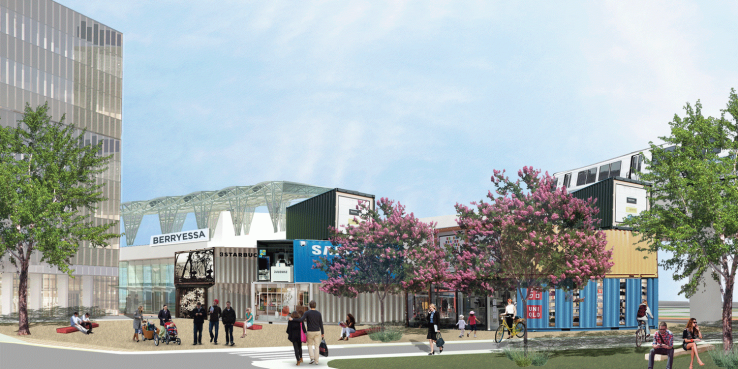The passage of Assembly Bill 2923 in 2018 means Bay Area cities must change their zoning to accommodate development on land that BART owns around its stations. This could allow the agency to create as many as 20,000 new housing units in the Bay Area. The station areas around BART and other transit are a scarce and critical resource in a region with too much traffic and not enough housing, offering direct access to the region and opportunities for growth that would support transit use.
But building near stations will take time, and right now most of this land is used for surface parking lots. All that parking sits on land that could both support and benefit from transit service, making for an environment oriented toward cars rather than people, just where we need the reverse.
Cities and transit operators — with the support of regional, state and federal agencies — have long sought to develop these station areas through transit-oriented development (TOD), compact, walkable, communities built around transit access. But these efforts face considerable obstacles, including slow and cumbersome local approval processes, unfavorable market conditions and antiquated transportation policies that prioritize parking.
Often the first step in station-area development is to build a big, expensive parking structure to free up parking lots for development. This takes time and creates high up-front costs for the station operator, making the often-marginal financial feasibility of station area development even more difficult. A major investment in structured parking also guarantees that transit station areas will remain designed for cars and not people, which works against the region’s goal to reduce driving. The advent of ride-hailing services and the prospect of autonomous vehicle technologies are already making the parking garage a dubious long-term investment, and all the more so in scarce transit station areas.
In addition, developers often balk at the densities necessary to support transit, preferring simpler products like townhouses in places where the market is unproven. Once garages and lower-density housing are built, they lock in a kind of lukewarm urbanism, foreclosing the possibility of a really transformative urban place.
A Solution: Temporary TOD
How might we give station areas a jump start that doesn’t build driving in — one that could enable real transformation as the market gets stronger?
One way to start is by borrowing the insights of tactical urbanism, the now-widespread practice of introducing low-cost, temporary amenities, uses and design interventions to get quick results, test ideas and, critically, shift the public and market perception of a place. This approach was pioneered by the New York City Transportation Department under Jeannette Sadik-Kahn. Throughout the city, temporary street designs and public spaces were quickly prototyped with a minimum of regulatory burdens, then assessed on the ground.
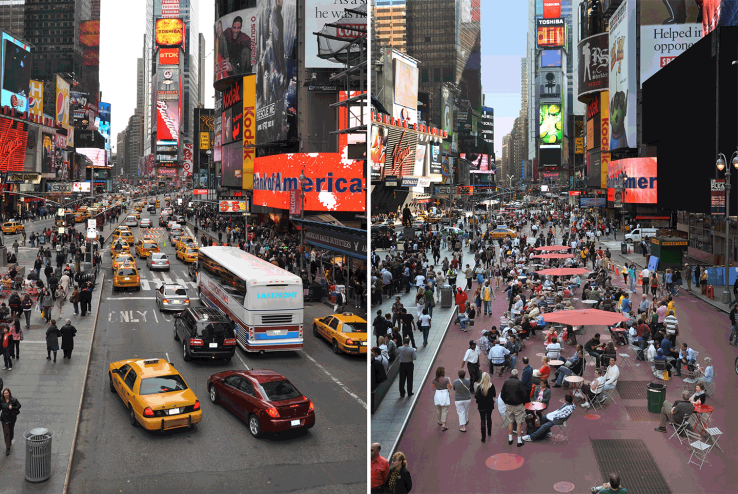
Tactical urbanism was quickly adopted by planning provocateurs, who created things like temporary parklets, and by real estate developers, who sought to seed market interest in a particular location by curating a compelling mix of arts, retail and events on a temporary basis.
The same concepts can be applied to transit station areas to catalyze transit-oriented development without major capital investment. We explored this idea in a 2014 article on plans for San Jose’s first BART station at Berryessa. Here’s how it might work, both there and at existing stations:
1. Use demountable parking decks to create temporary, removable parking structures.
This could immediately cut the footprint of surface parking by more than half, making the most desirable station-area parcels available for other uses. Standardized turn-key parking structures already exist for purchase or lease. A transit operator could acquire one or more structures and deploy them sequentially in different locations.
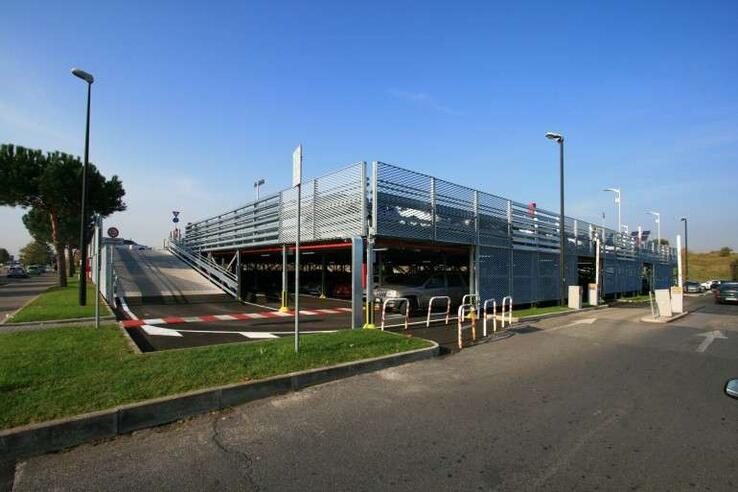
2. Create temporary amenity spaces geared toward the needs of transit riders.
These could be housed in temporary modular structures or shipping containers and might include coffee shops, retail, dry cleaning, food trucks, etc. They should be located immediately adjacent to station entrances and designed to serve both existing riders and potential new ones.
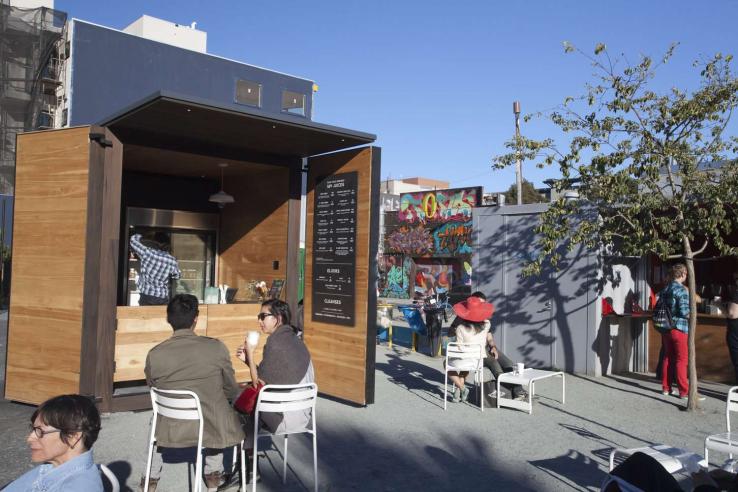
3. Lease commercial office space in temporary structures.
Office and flex space near transit is scarce and expensive in the Bay Area. Many small companies, startups and nonprofits struggle to find affordable space. Attractive temporary structures could be leased at moderate rates, providing employers with the transit- and amenity-rich environments that workers demand. These areas are also well-suited to co-working facilities. In addition, temporary projects can benefit from lower regulatory burdens under the California Environmental Quality Act.
Why offices, when we need housing so badly?
The office market is volatile and cyclical. Companies come and go, and so does demand. Temporary office can offer a pressure valve when costs are soaring in many transit-oriented locations.
Office space is reversible. It can be leased on a relatively short-term basis, providing a ready use that (unlike housing) can be phased out easily when the long-term development of the station area proceeds.
It supports reverse commuting. Outside the region’s urban core, most rail stations are largely residential areas (where transit trips begin) rather than job centers (transit trip destinations). Adding jobs here can fill up empty trains in the reverse-commute direction. In addition, a daytime population is critical to supporting station area amenities that serve both riders and area residents.
It supports transit ridership. Locating jobs near transit has a markedly higher impact on travel behavior than locating housing near transit.
Office space is fiscally desirable for local government. Housing often raises fiscal concerns for local governments. Temporary office and retail would be fiscally attractive in the near term, improving the chances of city support.
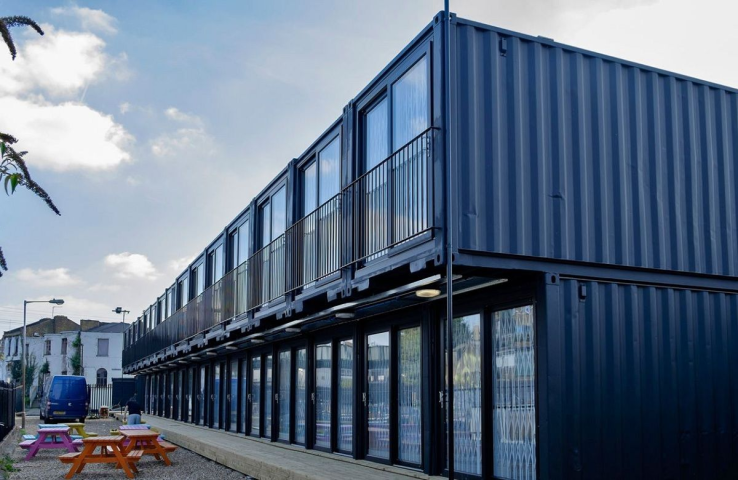
4. Provide space for arts, culture, nonprofit and community uses.
To broaden the population of users and serve community needs, transit operators or local governments could provide subsidized or noncommercial space to arts and culture, nonprofits, child and senior care or other uses.
5. Organize station-area circulation to support amenities.
Cities and transit operators should keep the goal of reduced driving in mind throughout the process. Temporary parking structures, new uses like offices or arts space, and drop-off zones should be organized not just for the convenience of drivers but to attract those arriving on foot, bike or other modes of travel.
Conclusion
Temporary TOD would create a hub of activity and a sense of place, backed by a meaningful revenue stream. Critically, it would offer proof of concept for both the community and the market. Instead of embarking on a long, expensive and risky process, Temporary TOD would allow all parties to see benefits quickly. The up-front costs would be much lower and wouldn’t commit resources counterproductively to auto-oriented infrastructure. Longer term station area development can then proceed on far stronger footing. In this way, the Bay Area’s scarce station-area land can be used proactively to support regional planning goals.
Special thanks to Ratna Amin for contributing to the development of this article.
